Diverse thalamocortical short-term plasticity elicited by ongoing stimulation
- PMID: 24403151
- PMCID: PMC6608150
- DOI: 10.1523/JNEUROSCI.2441-13.2014
Diverse thalamocortical short-term plasticity elicited by ongoing stimulation
Abstract
To produce sensation, neuronal pathways must transmit and process stimulus patterns that unfold over time. This behavior is determined by short-term synaptic plasticity (STP), which shapes the temporal filtering properties of synapses in a pathway. We explored STP variability across thalamocortical (TC) synapses, measuring whole-cell responses to stimulation of TC fibers in layer 4 neurons of mouse barrel cortex in vitro. As expected, STP during stimulation from rest was dominated by depression. However, STP during ongoing stimulation was strikingly diverse across TC connections. Diversity took the form of variable tuning to the latest interstimulus interval: some connections responded weakly to shorter intervals, while other connections were facilitated. These behaviors did not cluster into categories but formed a continuum. Diverse tuning did not require disynaptic inhibition. Hence, monosynaptic excitatory lemniscal TC connections onto layer 4 do not behave uniformly during ongoing stimulation. Each connection responds differentially to particular stimulation intervals, enriching the ability of the pathway to convey complex, temporally fluctuating information.
Figures
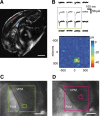
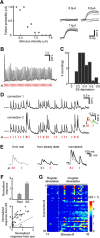
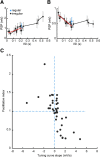
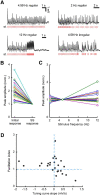


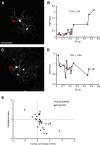


Similar articles
-
Presynaptic Adenosine Receptor-Mediated Regulation of Diverse Thalamocortical Short-Term Plasticity in the Mouse Whisker Pathway.Front Neural Circuits. 2016 Feb 23;10:9. doi: 10.3389/fncir.2016.00009. eCollection 2016. Front Neural Circuits. 2016. PMID: 26941610 Free PMC article.
-
Short-term Synaptic Depression in the Feedforward Inhibitory Circuit in the Dorsal Lateral Geniculate Nucleus.Neuroscience. 2018 Aug 1;384:76-86. doi: 10.1016/j.neuroscience.2018.05.022. Epub 2018 May 24. Neuroscience. 2018. PMID: 29802882
-
Diverse types of interneurons generate thalamus-evoked feedforward inhibition in the mouse barrel cortex.J Neurosci. 2001 Apr 15;21(8):2699-710. doi: 10.1523/JNEUROSCI.21-08-02699.2001. J Neurosci. 2001. PMID: 11306623 Free PMC article.
-
Spike timing and synaptic dynamics at the awake thalamocortical synapse.Prog Brain Res. 2005;149:91-105. doi: 10.1016/S0079-6123(05)49008-1. Prog Brain Res. 2005. PMID: 16226579 Review.
-
[Research progress on barrel cortex and its plasticity].Zhejiang Da Xue Xue Bao Yi Xue Ban. 2011 May;40(3):332-7. doi: 10.3785/j.issn.1008-9292.2011.03.018. Zhejiang Da Xue Xue Bao Yi Xue Ban. 2011. PMID: 21671497 Review. Chinese.
Cited by
-
Short-Term Synaptic Plasticity as a Mechanism for Sensory Timing.Trends Neurosci. 2018 Oct;41(10):701-711. doi: 10.1016/j.tins.2018.08.001. Epub 2018 Sep 25. Trends Neurosci. 2018. PMID: 30274605 Free PMC article. Review.
-
Response dynamics of rat barrel cortex neurons to repeated sensory stimulation.Sci Rep. 2017 Sep 13;7(1):11445. doi: 10.1038/s41598-017-11477-6. Sci Rep. 2017. PMID: 28904406 Free PMC article.
-
Sensory Adaptation in the Whisker-Mediated Tactile System: Physiology, Theory, and Function.Front Neurosci. 2021 Oct 29;15:770011. doi: 10.3389/fnins.2021.770011. eCollection 2021. Front Neurosci. 2021. PMID: 34776857 Free PMC article. Review.
-
Presynaptic Adenosine Receptor-Mediated Regulation of Diverse Thalamocortical Short-Term Plasticity in the Mouse Whisker Pathway.Front Neural Circuits. 2016 Feb 23;10:9. doi: 10.3389/fncir.2016.00009. eCollection 2016. Front Neural Circuits. 2016. PMID: 26941610 Free PMC article.
-
Computational protocol for modeling and analyzing synaptic dynamics using SRPlasticity.STAR Protoc. 2025 Mar 21;6(1):103652. doi: 10.1016/j.xpro.2025.103652. Epub 2025 Mar 2. STAR Protoc. 2025. PMID: 40029747 Free PMC article.
References
-
- Abbott LF, Varela JA, Sen K, Nelson SB. Synaptic depression and cortical gain control. Science. 1997;275:220–224. - PubMed
-
- Bale MR, Ince RAA, Santagata G, Petersen RS. Population coding of texture-induced whisker motion in the ventroposterior medial nucleus of the thalamus. Soc Neurosci Abstr. 2011;37:704.14.
Publication types
MeSH terms
LinkOut - more resources
Full Text Sources
Other Literature Sources
Research Materials
